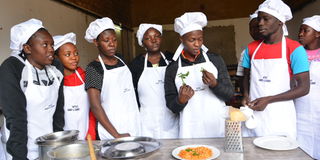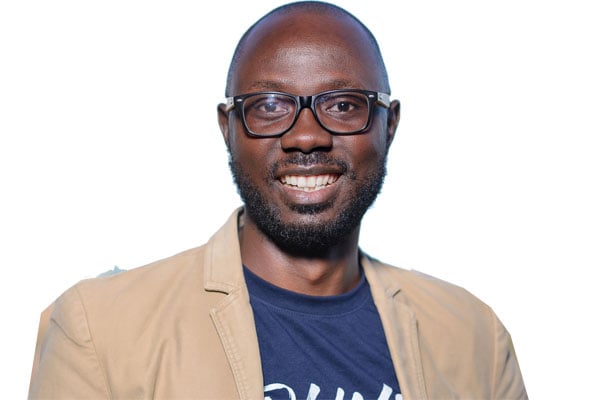Prime
Let’s encourage service learning

What you need to know:
Skills training: Times have changed, and the country needs to appreciate vocational training not only for metal fabricators, carpenters and mechanics but also hands-on learning for social scientists as well as encourage peer to peer learning
“During our youthful days, we would finish school and immediately get absorbed into the job market. Most of the jobs were in government institutions.”
My late father’s reflections of his youthful days sounded like everything came easy, but after pondering on it several times, I appreciated that most of the lot in his days had pursued practical courses as opposed to theoretical. Unfortunately, times have changed and the question that desires to be answered is “What went wrong?”
According to Prof. Augustus Nuwagaba, the director of Reeve Consults Uganda, the problem lies in the education system. He says the country is stuck with the colonial education system that trains students to be clerks, teachers and lawyers.
Truth be told, the system focuses on evaluating students’ competencies and abilities through tests and exams. Times have changed, and the country needs to appreciate vocational training not only for metal fabricators, carpenters and mechanics but also hands-on learning for social scientists as well as encourage peer-to-peer learning. Foreign investors also bemoan the lack of skilled workers in Uganda, which has also been registered as a global problem.
The International Labour Organisation says training institutions continue to produce graduates whose skills do not match what the market wants. This mismatch makes it harder to tackle youth unemployment.
Youth unemployment in Uganda is the highest in Africa. A study conducted by Action Aid termed Lost opportunity?, points out gaps in youth policy and programming in Uganda, with youth unemployment denoted at 62 percent, although evidence from African Development Bank indicates it could be as high as 83 percent.
Yet, according to the Ugandan population, 80 percent of young people are under the age of 30 and constitute the largest population in the whole world.
At least nine in every 10 Ugandans who have completed any form of education are unemployed. According to National Planning Authority statistics released in 2018, about 700,000 people join the job market every year regardless of qualification, but only 90,000 get something to do. This translates to 87 percent of people ready to work but cannot find a job.
Service-learning is a youth development strategy which engages young people in academic learning while providing service to the community.
Service-learning is based on experiential learning; an approach which advocates for youth to be active participants in their learning process. Young people are able to use practical real-world skills that transcend classrooms or programmes as they experience different phases of the learning process.
Active engagement in the learning process has been considered an essential part of education for many years. Educational reformers, including John Dewy in the early 1900s, advocated for students to take part in the experiential learning process because they believed young people would benefit from integrating academic skills with problem-solving skills.
During the ‘70s and ‘80s, educational theorist David Kolb, also examined experiential learning. Kolb identified four parts of the learning process; concrete experience, reflective observation, abstract conceptualisation, and active experimentation. Kolb’s learning cycle and experiential learning are examined in-depth in the Opportunities for Skill Building module.

Appreciating the out-of-school time programmes that provide youth with opportunities to engage in a wide variety of activities. After school programmes include programming designed to reinforce academic skills learnt during the traditional school hours. Service-learning experiences help youth make a connection between academic learning in their classroom and actions that serve their community. Partnerships between youth organisations or schools and communities are essential for creating these opportunities for youth development.
Engaging youth
Service-learning provides an environment that is engaging for youth. During activities, young people are able to integrate academic skills as they work to complete a project. In addition, youth build social skills as they collaborate with peers, programme staff, and community members. While working on a project, young people may analyse a problem, collaborate with others to find a solution, and justify methods used for solving the problem.
For example, consider this hypothetical situation: Youth decide to help a family shelter in their community. Youth find out that the shelter is in need of diapers to assist families with infants. The young people in the programme decide to organise a diaper drive. They approach leaders in the community and present the shelter’s dilemma and how they can help. Youth collaborate with local businesses in the area to create “Diaper Drop” areas throughout the community. Youth create posters and write ads in order to raise awareness and spark action.
Young people become active participants in projects and activities when given an opportunity to make decisions and voice their opinions about tasks in which they are involved. As youth use higher order thinking skills, they are able to engage more deeply in the service-learning activities.
Involving youth in planning projects that use hands-on format to encourage higher order thinking among young people can be engaging. Using an existing framework or guide can be helpful when working with youth to identify activities for a project.
Bloom’s Taxonomy provides a framework for a series of actions that can be used to engage young people in higher order thinking skills. Bloom’s Taxonomy is based on the work of educational psychologist Benjamin Bloom, and has been updated over the years to address the changing needs of educators and students.
As a project evolves through different stages, youth will engage in activities that incorporate different levels of Bloom’s Taxonomy. For example, if the young people in a programme decided to plant a community garden, they would engage in a variety of activities before they completed the final product.
Relevance of service-learning
Today, many young people are constantly engaged in using a variety of media, including instant messaging, texting, and social media sites. Youth are communicating, observing, thinking, and making decisions throughout most of their day in an interactive environment when planning activities for adolescents. It is important to take into consideration the experiences young people bring with them in order to create a learning situation where youth can engage and have fun in the process. By considering young people’s prior knowledge, programmes can build on their strengths and guide them to opportunities that facilitate higher order thinking.
One method that is beneficial to young people when acquiring and retaining new knowledge is to learn by doing. Youth respond well to an active or hands-on method of learning. Academic and social skills can be developed through planned activities that include service to the community.
Service-learning allows young people to be active participants in projects and activities that are designed to encourage the use of a variety of real-world problem-solving skills. Consider the following example: Providing opportunities for young people to practice collaboration and communication skills as they work together on a project can lead to youth using the same process skills in school courses or at home. This will help harness skills that are vital for the job market as well as give youth leverage to be entrepreneurs, which helps bridge the unemployment gap.
The writer Cedrick J. Wabwireis a researcher at UCU-Africa Policy Centre
Email: [email protected]




